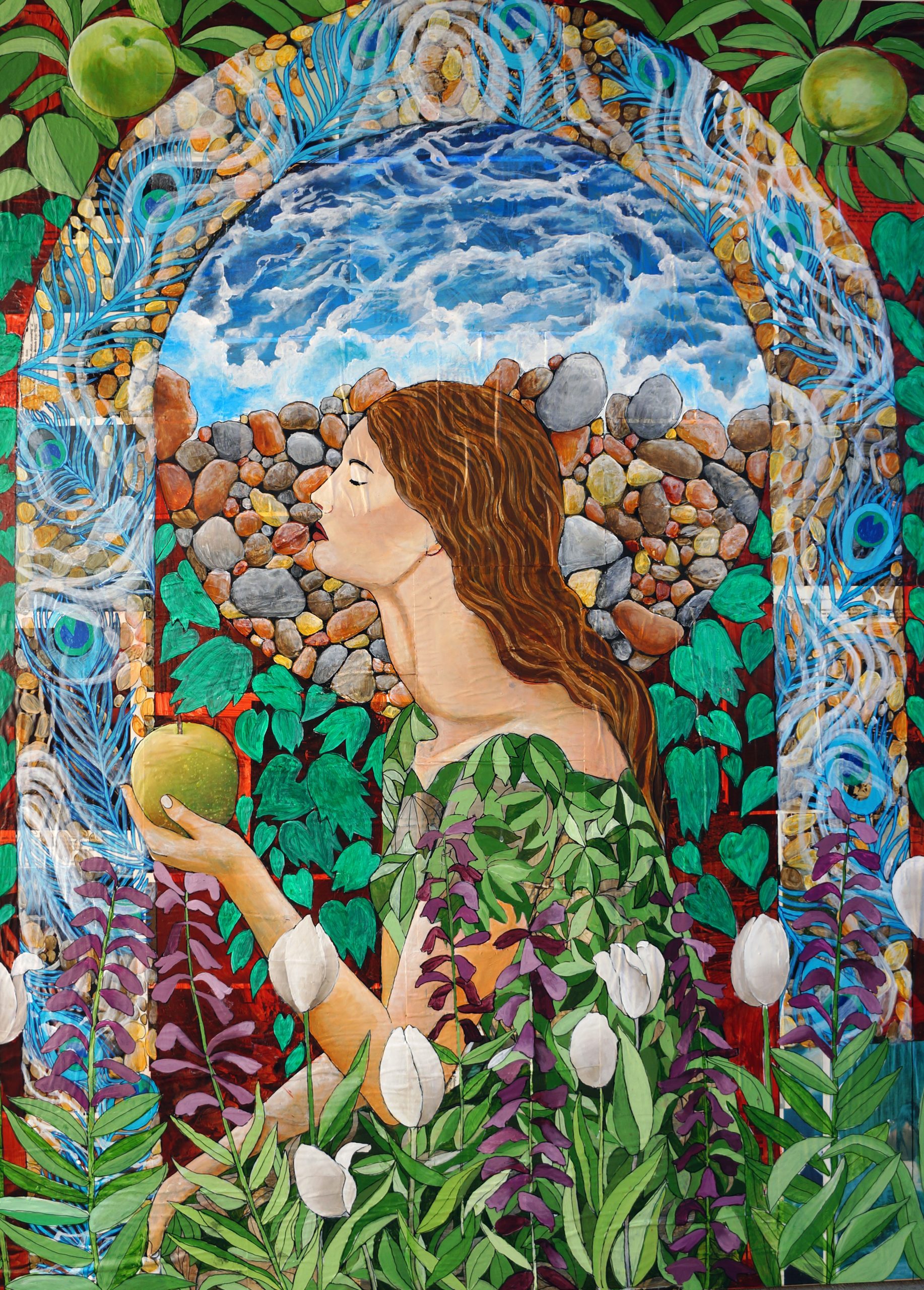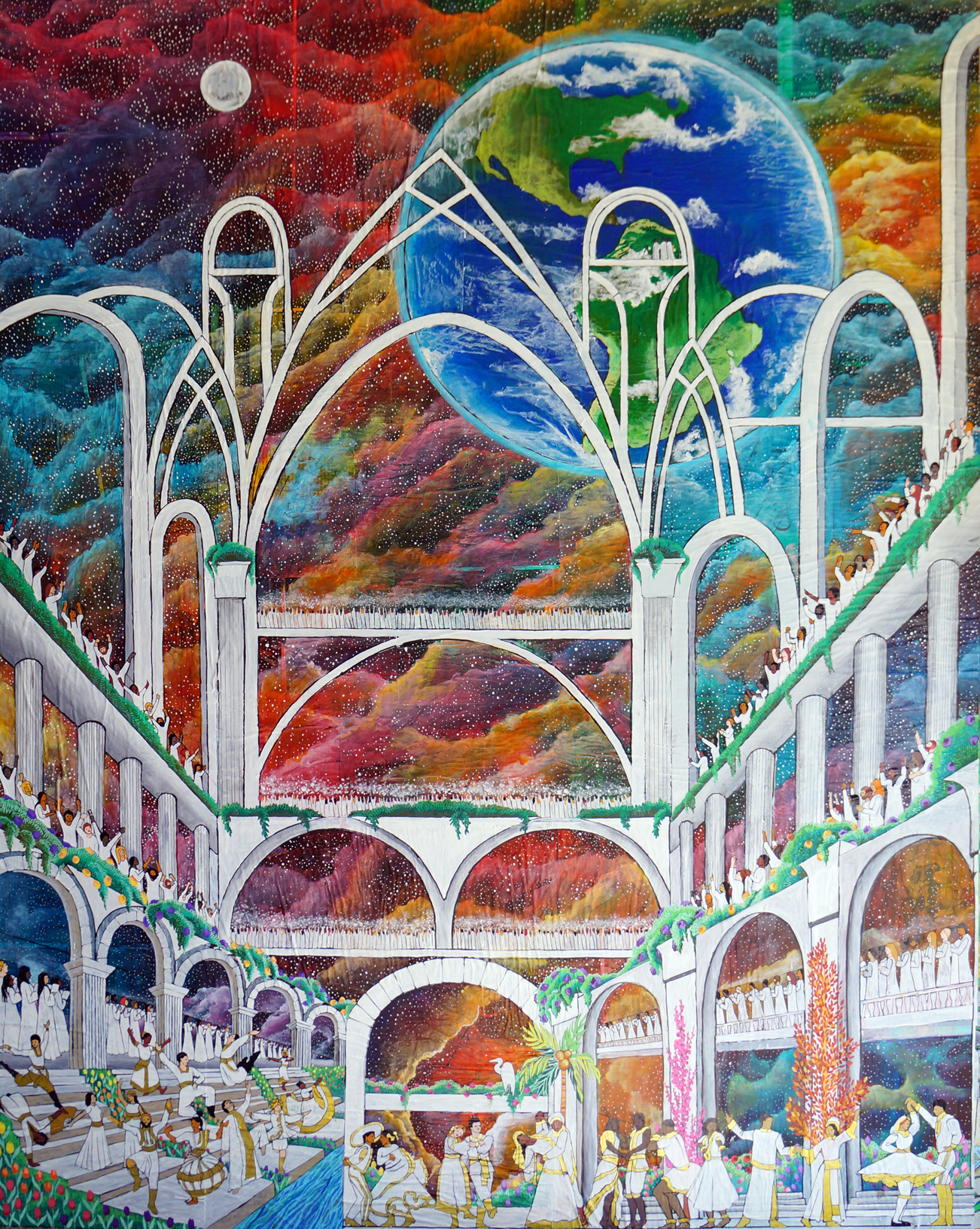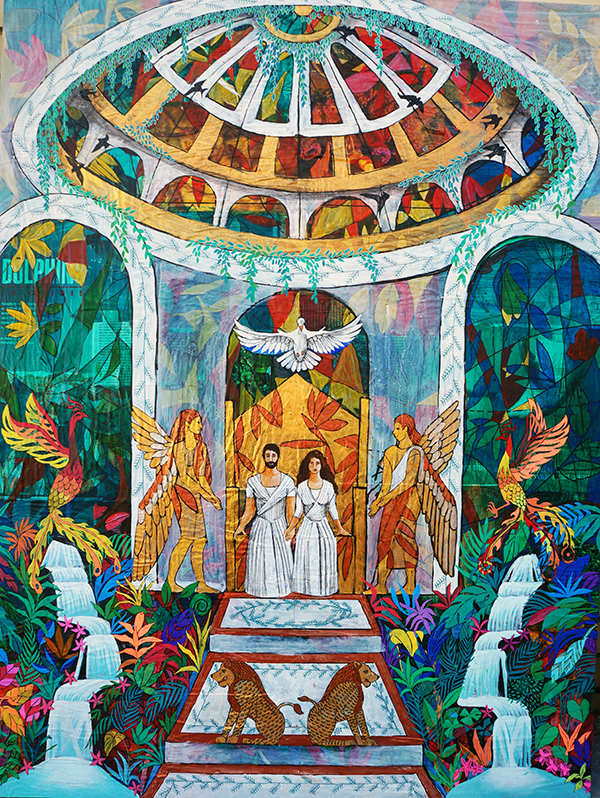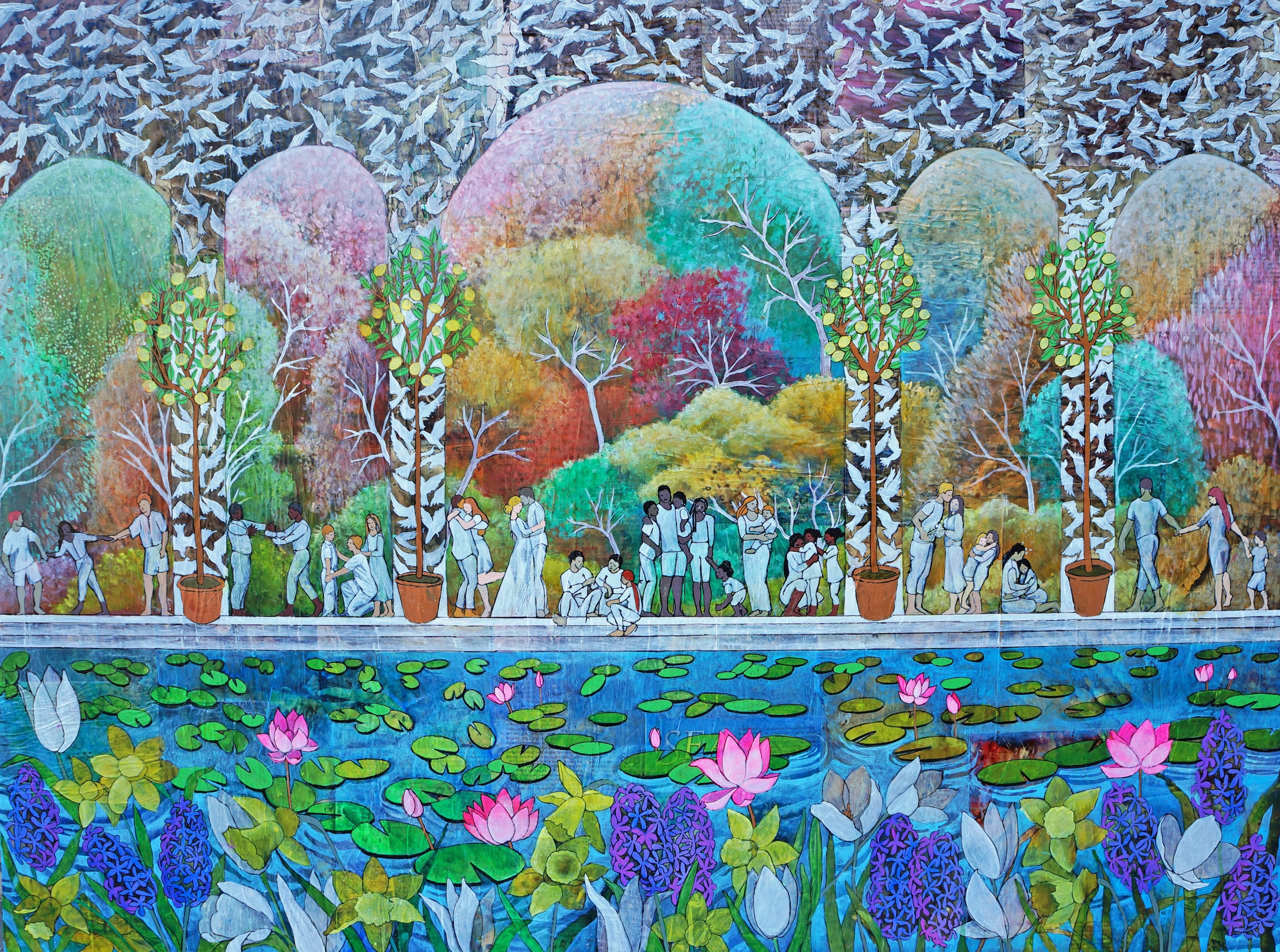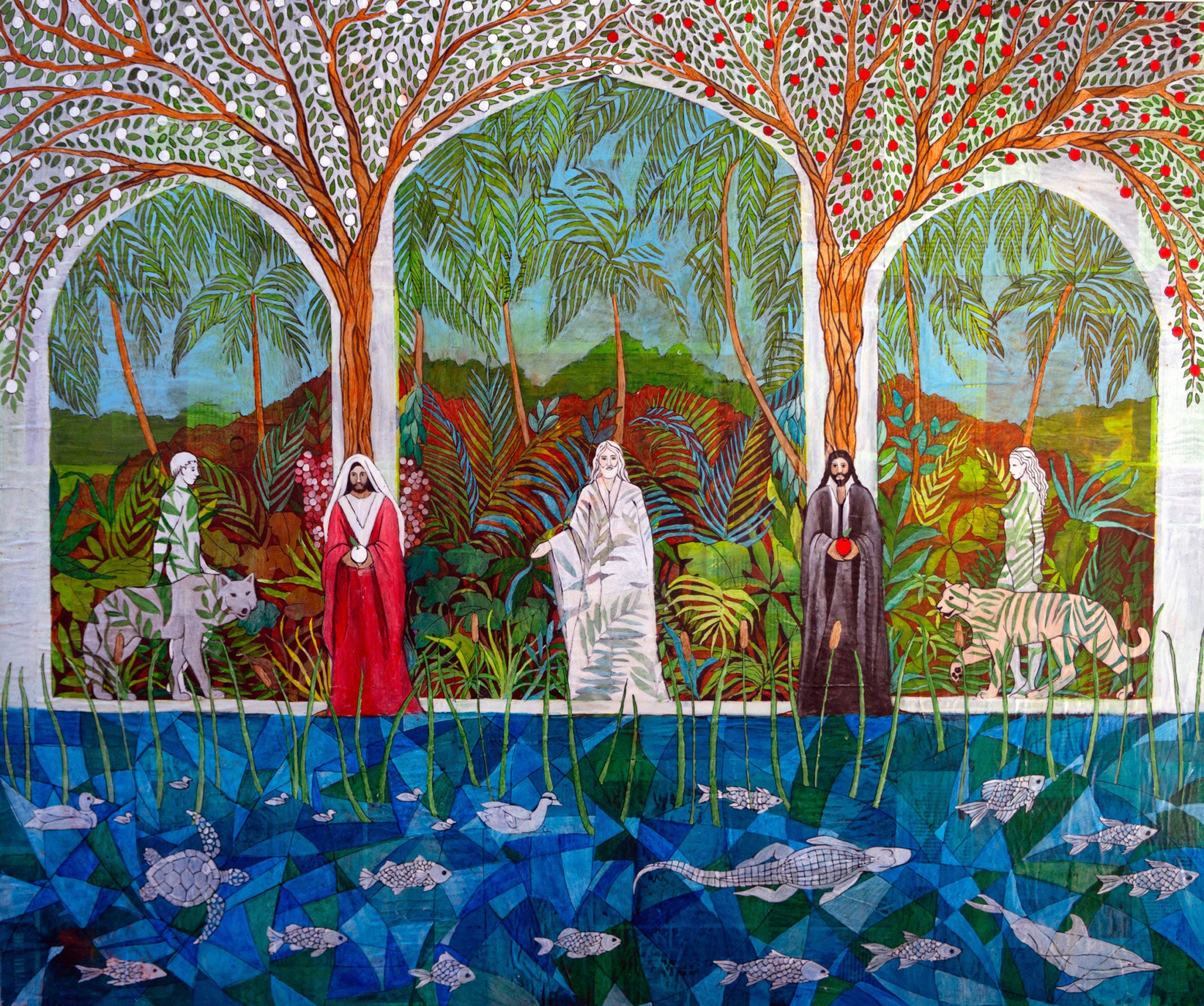Pointing Heavenward:
How I Use Arches in My Think Celestial Series”
I took art history multiple times in college—not because I had to, but because I loved it. The classical architecture of old cathedrals especially captivated me: the buttresses, columns, vaulted ceilings, and most of all, the arches. These elements spoke to something sacred, enduring, and heaven-reaching.
As I’ve developed my Think Celestial series, I’ve used arches to represent entry points into the divine—gateways between the temporal and the eternal. I want the viewer to feel as if they’re stepping inside sacred architecture, not just observing it. These arches are more than structural; they’re symbolic invitations to rise, reflect, and remember.
Historically, arches have carried rich meaning across cultures. They provided strength and stability, enabled grand open spaces, and marked triumph, transformation, and transcendence. In religious architecture, walking beneath an arch symbolized stepping from the secular into the sacred. Their upward curve lifts the eye—and the soul—toward heaven.
Let’s walk together through five pieces in this series, each using arches to frame a unique vision of the celestial:
1. Daughter
Inspired by a recessed garden arch, this piece frames the divine feminine. The flowing water and lush growth speak to the Spirit’s role in regeneration. The arch becomes a symbol of renewal, womanhood, and holy creation.
2. Foundations of the Earth
I imagined a joyful premortal realm as Earth’s foundations were laid. A celestial amphitheater of impossible arches sets the stage for singing, dancing, and divine celebration. Through them, we glimpse the cosmos, framed by the Creator’s hand.
3. One Flesh
Rooted in the doctrine of celestial marriage (D&C 132), this piece shows Adam and Eve enthroned, their earthly mission complete. Arches frame Eden in its paradisiacal glory, emphasizing unity, fulfillment, and eternal love.
4. Reconciliation
I believe there’s a sacred place in the next life for healing broken relationships. In this cathartic garden, doves in flight form archways above those who embrace and forgive. The arches here aren’t stone—they’re formed from peace.
5. The Plan
This composition recalls the Council in Heaven. A grand arch frames Heavenly Father as He presents the Plan. Jesus and Lucifer stand beneath it, backed by its supporting pillars. Smaller arches shelter Adam and Eve, surrounded by elemental animals and foliage—symbols of the Garden and the Earth where the plan would unfold.
The purpose of this series is to offer a visual refuge from the demands of everyday life. I hope these works prompt a pause—a glance heavenward—and inspire thoughts of eternity amid the chaos of mortality.
As you view these pieces, I invite you to consider:
What does heaven look like to you?
What symbols live in your version of the celestial?
And how might you make that vision a part of your everyday life?
